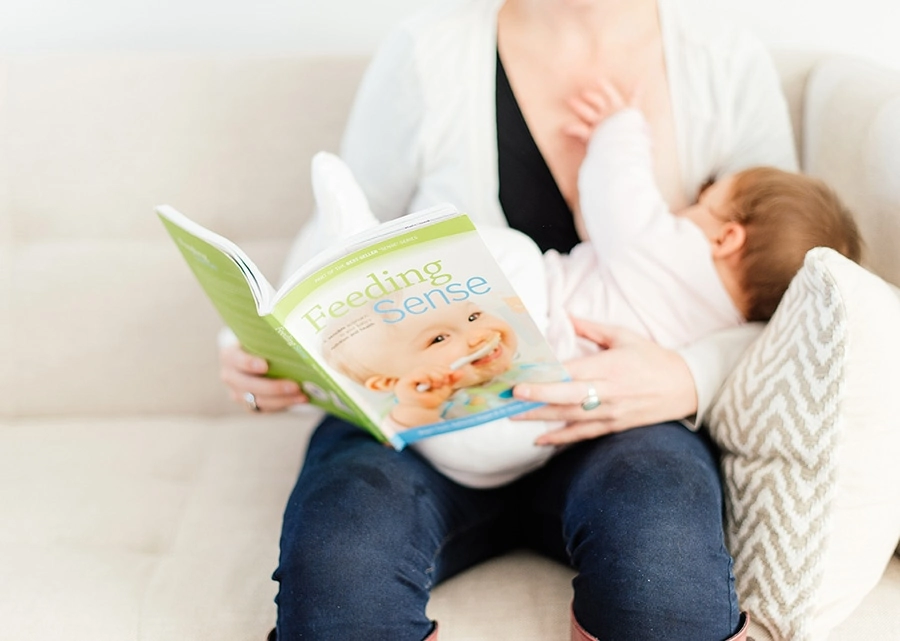Many people may argue the fact that breast feeding should be the most natural thing in the world. So, what’s wrong with you if you find the whole breast feeding thing really hard?
Indeed it is a very natural and easy thing for most new mothers, but for some, it is an incredibly stressful and traumatic part of mothering.
Let’s take a look at the issues that might make breast feeding in the early days really difficult.
• Engorged and swollen breasts:
This typically happens around day 4 after delivery (slightly longer after a caesarian birth). Your breasts will become full and heavy, and excruciatingly tender to the touch. In some instances, they become rock hard, hot and sore. This is what is commonly known as “milk coming in”. It usually settles after around 72 hours. Feed your baby on demand, as normal, and don’t be tempted to express your breasts to make them emptier and softer – all you will do is encourage more milk to be produced! Place cabbage leaves in your bra (they really do work), rub arnica cream or oil onto your sore and swollen breasts, and take an anti-inflammatory medication to help with the pain and swelling (ask your pharmacist, clinic sister or doctor to recommend one that is safe for breast feeding). Applying ice packs also helps with the pain and inflammation. Persevere, it will get better – just give it some time, and don’t expect your breasts to settle down for at least a few days.
• Blocked milk ducts or mastitis:
Blocked milk ducts commonly occur, especially in the first few days after your milk has come in and your breasts are feeling swollen and sore. You can usually feel the actual spot where the blockage is, because it is sore, and if you look, you may see a red and inflamed area. This is more prevalent before a feed when your breasts are full, and feeding usually gives you some relief. You may also feel a bit feverish and have a headache. Gently massage the tender and red area with some arnica oil or cream, and apply heat to the area after you have finished feeding. Taking Anti-inflammatory medication also helps. In some instances your doctor may prescribe anti-biotics. Keep a close watch on the affected area, as it may develop into a breast abscess if the blockage is not released. If the red and tender area does not lessen after a feed, and if the entire area does not settle down within a few days, and you are feeling feverish and unwell, it is best to seek medical advice in case you have a breast abscess, which will need to be surgically drained.
• Cracked and bleeding nipples:
This is a common reason for throwing in the towel with breast feeding due to excessive pain and discomfort with feeding.
The most frequent cause of cracked nipples is incorrect latching of the baby’s mouth onto the nipple. Make sure that your baby is latched onto the breast correctly, with both top and bottom lip in a snug seal around your nipple. Your pain level will indicate to you if your baby is latched correctly or not! To release the suction on your breast so that you can take your nipple out of his mouth, insert your finger into the corner of his mouth and gently withdraw your nipple from his mouth, and retry to latch him successfully.
Using a nipple shield (available from your pharmacy or baby shop) during feeding gives cracked and bleeding nipples time to heal. Speak to your clinic sister or doctor to recommend a nipple cream to assist with healing. Exposing your nipples to some sunlight also helps to hasten healing (easier said than done!). Expressing breast milk and offering it to your baby from a spoon or a bottle is also a way to let your nipples heal whilst continuing to breast feed.
• Not enough milk:
Don’t listen to old wives tales about your milk being too strong or too weak. It is not the quality of the milk that makes the difference, it is the quantity. If your baby is unsettled after feeds and appears hungry all the time, get her weighed frequently to ensure that she is growing adequately. If your baby is gaining weight, having at least 6 wet nappies a day, and is relatively happy in between feeds which may be very frequent in the early days, lengthening to a few hours after a few weeks; then you can rest assured that you have enough milk.
Your stress and anxiety, a poor diet and inadequate fluid intake all play a part in hampering breast milk production. Make sure you are eating enough protein (you need to increase your protein intake three fold whilst breast feeding), drinking at least a litre of fluid a day and that feeding times are relaxed and calm. The main hormone that ensures adequate milk production (oxytocin) is affected by emotions, so if you are anxious and upset at feed time, this important hormone will be affected, and you will produce less milk.
• Make feeding time a soothing time:
By getting in tune with your baby’s senses, you can meet her needs and avoid unnecessary fussing and crying. You’ll also have a more relaxed baby, whose needs are met. Keep your baby’s sensory environment the same each feed time. Be cautious with any extra sensory input, like talking or touching. She needs to keep all her attention on sucking, swallowing and breathing. Reciprocate your baby’s sensory signals. If she looks at you, return eye contact, but look away when she looks away to allow her ‘sensory space’ to focus on feeding.
• Take the good days with the bad:
Have realistic expectations around breastfeeding and realise that you will have both good and bad days. Sometimes the bad days seem to be worse than the good days, but follow these simple tips and hopefully breast feeding will work for you.
- Feed your baby in a quiet, calm environment
- Take an extra minute or two to get yourself organised before feeding your baby
- Find the most comfortable position in which to feed
- Make sure that your baby is latched onto the breast correctly, with both top and bottom lip in a snug seal around your nipple
- To release the suction on your beast so that you can take your nipple out of his mouth, insert your finger into the corner of his mouth and gently withdraw your nipple from his mouth
- Allow a maximum of 40 minutes per feed
- Breastfed babies often need a minute or two in between sucks to catch their breath
What now?
If breastfeeding doesn’t come naturally to you, and you are starting to feel rather desperate, remember that it takes up to six weeks to establish any semblance of a feeding routine and corresponding milk supply. However, if your struggle with breastfeeding starts to affect your mood and bonding with your baby or relationship with your partner, is stressing you out or is contributing to depression, and you have decided to reconsider your options, do not feel guilty.
If you have made the decision to start feeding your baby formula, or have been forced to do so because of medication you are taking or a return to work, rest assured that with today’s wide choice of milk formulas… you can ensure that your baby will be well fed. Infant formulas today are highly advanced and are available as hypo-allergenic, lactose-free, cow’s milk protein-free, anti-reflux, soya bean protein feeds and pre-acidified – among others! Ask your paediatrician or clinic sister to help you choose.




